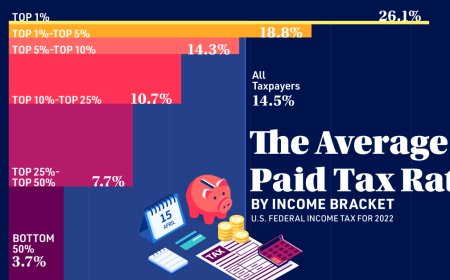Streamlined Loan Origination System for Fast Approvals
A loan origination system (LOS) is a software platform that automates and manages the end-to-end process of loan application, evaluation, approval, and disbursement.

In todays highly competitive lending environment, speed and accuracy are key to staying ahead. Whether you're a bank, NBFC, fintech startup, or microfinance provider, adopting a powerful loan origination system is essential to streamline the lending process, reduce turnaround time, and deliver better customer experiences.
A loan origination system (LOS) is a software platform that automates and manages the end-to-end process of loan application, evaluation, approval, and disbursement. It brings together various stakeholders, from customers and sales teams to credit analysts and compliance officers, to operate in sync through a digital-first approach.
What is a Loan Origination System?
A loan origination system is a digital solution that handles all the steps involved in originating a loanfrom capturing a borrowers application to underwriting, risk assessment, documentation, decision-making, and final approval or rejection. It ensures that lending institutions can manage high volumes of loan requests efficiently while minimizing manual intervention.
Modern LOS platforms are cloud-based, scalable, and capable of integrating with third-party systems such as credit bureaus, payment gateways, KYC verification tools, and more. By digitizing workflows, an LOS reduces paperwork, prevents fraud, and accelerates loan disbursement.
Why Modern Lenders Need a Loan Origination System
The traditional lending process can be lengthy, error-prone, and dependent on human resources. It involves multiple manual steps such as form filling, document scanning, verification, and physical approval. With rising competition and the need for instant services, this approach no longer meets customer expectations.
A loan origination system resolves these challenges by:
-
Automating Data Collection: Borrower information is collected via digital forms and API integrations.
-
Performing Real-Time Credit Checks: Integration with credit bureaus enables instant score fetching and risk evaluation.
-
Ensuring Compliance: Built-in regulatory checks reduce the risk of non-compliance.
-
Improving Customer Experience: Faster approvals and digital interactions increase customer satisfaction.
Moreover, a loan origination system supports Loan Lifecycle Management, allowing lenders to track and manage loans from the moment of application to final closure or renewal.
Key Features of an Effective Loan Origination System
When choosing a loan origination platform, institutions should consider features that cover every aspect of the loan initiation process. These include:
1. Omnichannel Application Capture
Support for online, mobile, branch-based, or agent-assisted loan applications.
2. Workflow Automation
Pre-configured and customizable workflows to manage different stages of loan processing automatically.
3. Credit Scoring and Risk Assessment
Integrated tools to evaluate the creditworthiness of borrowers based on internal models and external credit data.
4. Document Management
OCR technology, e-signature integration, and cloud-based document storage simplify submission and validation.
5. Underwriting Automation
Automated decision engines allow for faster and more consistent loan approvals.
6. Disbursement Integration
Connectivity with Core Banking or third-party payment systems for seamless fund transfers post-approval.
7. Audit Trails and Reporting
Comprehensive logs and reporting capabilities ensure transparency and compliance with regulatory requirements.
Integration Capabilities
A standalone loan origination platform may not deliver full value unless it integrates well with other systems. Top LOS solutions offer API-based integration with:
-
Credit Bureaus (CIBIL, Experian, etc.)
-
KYC & Aadhaar Verification Tools
-
Core Banking Platforms
-
Payment Gateways
-
CRM and ERP Software
-
Document Verification and Digital Signature Providers
Such integrations ensure that data flows securely and smoothly between systems, avoiding manual re-entry and ensuring a unified experience for customers and staff alike.
Benefits of Implementing a Loan Origination System
Instituting a digital loan origination system brings numerous advantages:
-
Faster Turnaround Time: Reduces loan approval from days to hours or even minutes.
-
Reduced Operational Cost: Automation lowers the cost per loan processed.
-
Scalable Architecture: Handles increased volume as your customer base grows.
-
Lower Default Rates: Improved credit assessment and fraud detection reduce risks.
-
Enhanced Compliance: Built-in checks ensure that applications meet regulatory standards.
-
Improved Employee Productivity: Teams can focus on value-added tasks rather than repetitive processing.
Use Cases Across Lending Sectors
A loan origination system can be used by various financial institutions, including:
-
Commercial Banks: Streamline personal, business, auto, or housing loans.
-
NBFCs and Microfinance Firms: Handle large volumes of small-ticket loans in rural or semi-urban regions.
-
Fintech Startups: Offer digital-first lending experiences with real-time approval and onboarding.
-
Credit Unions and Cooperatives: Ensure transparency and accountability in small community loans.
How to Choose the Right LOS
When selecting a loan origination system, lenders should assess their unique operational needs and long-term goals. Key considerations include:
-
Customizability: Does the system allow you to define custom workflows and loan products?
-
Scalability: Can it support future business expansion or regulatory changes?
-
Security: Is the data encrypted and compliant with financial data protection standards?
-
User Experience: Is the interface intuitive for both applicants and employees?
-
Vendor Support: Is there a dedicated team for implementation, training, and troubleshooting?
Evaluating the total cost of ownership and ROI is also essential before finalizing a solution.
Trends Shaping Loan Origination in India
Indias lending market is rapidly transforming due to digital banking, UPI adoption, and fintech innovation. As a result, the demand for automated loan origination system platforms is increasing. New trends include:
-
AI & ML in Credit Decisions: Using alternative data and predictive analytics for better loan evaluations.
-
Video KYC and Remote Onboarding: Expediting loan applications without physical visits.
-
Blockchain for Documentation: Enhancing the security and authenticity of loan agreements.
-
Voice & Chatbot Integration: Automating customer interaction and support.
These advancements are expected to make loan origination even faster, more secure, and customer-centric in the coming years.
Conclusion
A robust loan origination system is no longer a luxuryit's a necessity for lenders looking to stay agile, compliant, and competitive. From streamlining the borrower journey to improving underwriting accuracy and enabling quicker disbursements, an LOS transforms the lending process from end to end.
Whether you're a traditional bank looking to digitize or a fintech startup aiming to scale, investing in the right loan origination platform will empower your team, delight your customers, and drive long-term growth.






































